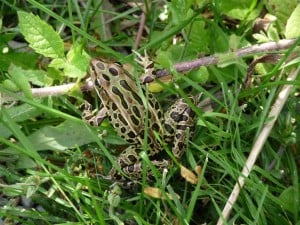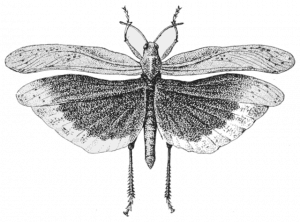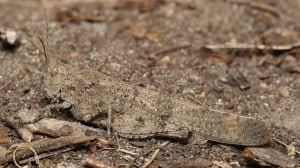This afternoon, I walked the Trans-Canada Trail west from the steep footpath leading down to the trail from the end of Wallis Drive, past the blue bridge (near the pumping station entrance point on Parkhill Road at Ravenwood) to Ackison Road. A number of wildflowers continue to bloom and most of the shrubs are heavily laden with fruit. Here are some of the other highlights.
1. Walking along with one foot in the grass and one foot on the path, I must have scared up at least 100 Northern Leopard Frogs that were feeding in the mowed vegetation along both sides of the trail. The frogs were most numerous in the section just west of the orange bridge at Lily Lake but I did see them in many other locations as well. I believe they would have been feasting on the many crickets and grasshoppers present at this time of the year. I also came across an Eastern Garter Snake in the grass that was probably hunting frogs. There it was, the entire food chain before my eyes: grass to cricket to frog to snake!
2. Birds: Brown Thrasher, Gray Catbird(2), Cedar Waxwing (20), American Goldfinch (10), Great Blue Heron, Black-capped Chickadee, Song Sparrow, American Black Duck
3. The combination of high humidity, high air temperature (27 C) and Monday’s rain seemed to enhance the smell of the various plants along the trail. Much of the smell was “petrichor” – the strong scent of the air when rain falls after a dry spell. It is due to a combination of soil bacteria and oils that are given off by certain plants during dry periods like the one we’ve just been through. I noticed, too, how much stronger than usual the smell of the phlox blossoms were in my garden today.
4. A great deal of Turtlehead (white blossoms) is now in bloom in damp areas and the fruit of the Nannyberry is turning from green to red/orange.
5. Carolina Locusts continue to be abundant along the trail and continually fly up, flashing their black and yellow hindwings. It’s easy to mistake them for butterflies. When they land, however, their camouflage is almost perfect.


